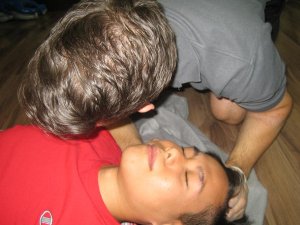
Skull fractures are breaks in the continuity of the integrity of the skull which is caused by a forceful trauma. It may occur with or without damage to the brain tissue. Skull fractures can be further classified as simple, comminuted, depressed, or basilar.
Skull fractures that are linear is characterized as a simple break in the continuity of the bone. A simple (linear fracture). A comminuted skull fracture refers to a splintered or multiple fracture line. When a bone fragment is embedded into the brain tissue, the fracture usually becomes depressed. It is imperative that fragmented bone be removed from the brain as it may cause bleeding which in turn can aggravate the injury. A fracture may be open, indicating a scalp laceration or tear in the dura layer of the brain, or it may be closed in which case the dura may still be intact.
Clinical manifestation of skull fractures
Symptoms of skull fractures apart from those of the local injury, depends on the severity and the distribution of the underlying brain injury. Persistent, localized pain typically suggests that a fracture is present. Fractures of the cranial vault may or may not produce swelling in the region of the fracture; therefore an x-ray is usually needed as a conclusive diagnostic exam to rule in fracture of the skull.
Fractures of the base of the skull tend to transverse the paranasal sinus of the frontal bone or the middle ear located in the temporal bone. Hence, this type of fracture usually produces copious amounts of bleeding from the nose, pharynx, ears and blood may also appear under the conjunctiva. Basilar skull fractures are suspected when cerebro-spinal fluid escapes from the ears and nose. A halo sign (a blood stain surrounded by a yellowish stain) may be seen on bed linens or on the head dressing and is conclusive finding of a cerebro-spinal fluid leak.
Gerontologic considerations for skull fractures
Elderly patients must be assessed very carefully for any signs of skull fractures following accidental falls or injuries. Even with similar types of injury, an elderly person often suffers more severe injury than younger persons mainly because the former’s recovery period is slower and are at an increased risk for possible complications brought about by their advance age and frail physical condition. The elderly patient suffering from behavioral disturbances should be assessed for head injuries because what may constitute as a “minor” head trauma may result in long-term disability if the injury had been taken seriously.
Medical management of skull fractures
Non-depressed skull fractures generally do not require surgical treatment; however, close observation of the patient is very important. Members of the healthcare team should closely monitor for any signs and symptoms of persistent and localized swelling. If the patient’s condition significantly improves, specific instructions should be given to the patient and his/her significant others for continuity of care in the home.
Depressed fractures normally require surgical intervention,
particularly those that are contaminated or severely deformed. Prior to the surgery, the scalp must be shaved and cleansed with copious amounts of saline solution to remove any debris. Large defects can be repaired with bone or artificial grafts. Penetrating wounds of the scalp and skull requires surgical debridement to remove foreign material and/or bone fragments in order to devitalized brain tissue and control bleeding as a result of sustained skull fractures.
